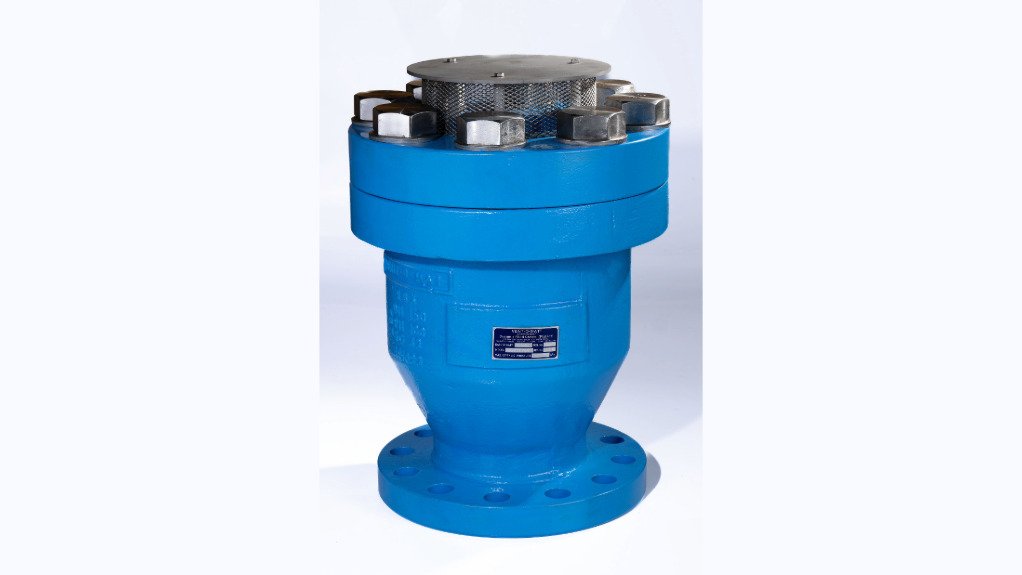Developments in valve technology, driven by several innovative advancements aimed at enhancing efficiency, safety and operational longevity, are meeting the demanding requirements of the mining industry, reports valve manufacturer Dynamic Fluid Control (DFC) research and development engineer Jonathan Suter.
The mining industry, he says, is increasingly focused on valves that offer low cost of ownership and low maintenance – factors ensuring continuous operations, which are crucial for maintaining productivity and profitability in mining activities.
There are several advancements in valve design that assist in achieving this along with providing other benefits, highlights Suter.
The integration of Internet of Things (IoT) technology with valves has led to the development of so-called “smart valves”, which are capable of monitoring their own performance, detecting real-time issues and providing data analytics for predictive maintenance.
These features, he says, contribute to significantly reducing downtime while boosting operational efficiency.
Further, advancements in automation and remote-control technologies have improved valve operation, enabling for more precise and efficient management.
Remote monitoring and control enable operators to adjust valve settings without being physically present, enhancing safety and reducing labour costs.
Suter also highlights advancements in valve sealing technologies, which has resulted in valves with superior leak prevention capabilities.
“This is crucial in mining operations where the containment of hazardous fluids and gases is essential for safety and environmental protection,” he says.
In addition, the use of advanced materials, such as corrosion-resistant alloys and ceramics, extends the lifespan of valves and improves their performance in harsh mining environments.
In this regard, valve manufacturers must balance various factors when developing and manufacturing high-performance valves for the mining industry, notes DFC technical draughtsperson Isaac Mahlangu.
He explains that valves must be made from materials that can withstand highly abrasive and corrosive environments while maintaining structural integrity and performance.
Such valves must also operate effectively under extreme pressures and temperatures, which requires precise engineering of their components.
Further, valves should be designed for long-term reliability with low maintenance requirements, including the incorporation of features that enable for easy inspection, cleaning and part replacement, particularly in remote locations.
Mahlangu adds that manufacturers must also comply with various industry standards and regulations related to safety, environmental protection and quality, which adds to the complexity of valve design and manufacturing.
Navigating Hurdles
Global supply chain disruptions, owing to geopolitical tensions, fluctuations in raw material availability and commodity prices, along with transportation delays and workforce challenges, have affected the availability of advanced valve solutions in the mining industry, notes Suter.
“If not managed correctly this can lead to extended lead times, increased costs and uncertainties in the procurement process,” he says.
Therefore, DFC employs several strategies to ensure a steady supply of critical valve components amidst these disruptions, which includes maintaining a surplus of stock as well as proactive ordering.
Vent-O-Mat Slurry Air Release Valve
As part of DFC’s efforts to meet the demanding requirements of the mining industry, the company has developed the Vent-O-Mat Slurry Air Release Valve (SAV) PN100, which is rated to 100 bar pressure, says Mahlangu.
The Vent-O-Mat SAV has a single chamber design with cylindrical high-density polyethylene floats which performs well compared to the steel ball floats currently available, which often get stuck during operation, he explains.
The SAV ensures more efficient pumping by expelling air from the pipeline and protecting it against vacuum conditions or implosion.
Further, it enhances slurry management by eliminating clogging issues owing to its nozzle-free design.
The SAV features a removable top cover flange, providing easy access for maintenance if required; however, this design requires low maintenance, ensuring long-term reliability and ease of use, concludes Mahlangu.
Edited by: Donna Slater
Features Deputy Editor and Chief Photographer
EMAIL THIS ARTICLE SAVE THIS ARTICLE
ARTICLE ENQUIRY
To subscribe email subscriptions@creamermedia.co.za or click here
To advertise email advertising@creamermedia.co.za or click here













